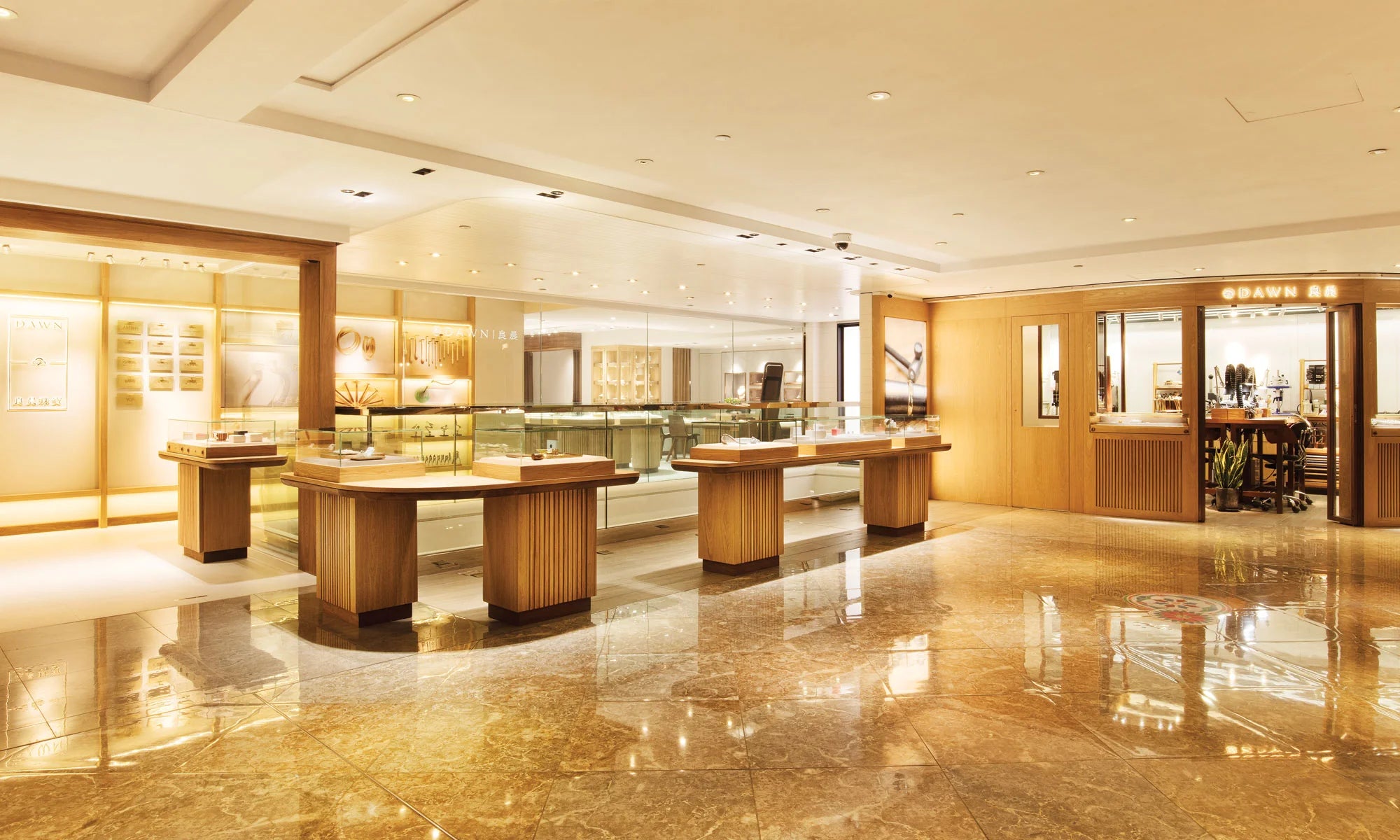Shape
How does a diamond look like? People often relate diamond in round shape. In fact, most unpolished rough diamonds are in octahedron shape. Round diamonds are indeed through polishing to meet market demand. Proficient diamond cutters determine how to cut the rough diamonds after studying their status. The octahedron-shaped rough diamonds are usually divided into two parts to produce two round diamonds. Round-shaped diamonds incur heavier weight loss during cutting process with precious cutting skill is required, therefore round-shape diamond appears higher value among others.


Different types of cuts create a different effect. Step cut is to reveal diamond brightness and transparency, the princess cut is to preserve the most weight and size after rough is divided into two; pear-shaped and oval-shaped diamonds appears exquisiteness compare to same carat weight of round diamonds.

The price of round brilliance is higher than other shapes because of the popularity. That is because round brilliance has perfect symmetry and proportion, it exhibits the maximum brightness and fire effect of the stone.

Other diamond shape includes princess, emerald, oval, pear, heart, marquise, radiant, cushion etc. Some cutter may produce special shape, such as star- or animal-shape.
Carat
Diamond weight unit is known as Carat. Do you know the name Carat indeed comes from Carob bean? In ancient times, the diamond trading area abounded in Carob beans. Local businessmen discovered the seeds of Carob have uniform weight for weighting of diamonds. The word “Carat” as a result, has becomes the unit of diamonds’ weight. Nowadays, diamond weight needs to be measured by machine for precise accuracy.


One carat equals 200mg (0.2g) or 100 points. Thus, a 0.7-carat diamond can be also described as 70 pointers. In Hong Kong, engagement rings that set with diamond between 0.7 ct. and 2 cts. are more popular.

The price of a diamond increases dramatically at Critical points. Let’s say if color and clarity of a 0.90 ct. diamond and a 1.00 ct. diamond are the same, their prices results in a big difference despite of their similar weight. Thus, it should be aware when purchasing diamond.

The price of a diamond increases according to its weight. However, weight is only one of the factors affecting its price. Therefore, a 1.0 ct. diamond may be more expensive than a 1.3 cts. diamond due to clarity and colours differences.
Colour
White diamonds are valued by “colour”. Interestingly, it is all about “how colourless it is”. GIA graders grade diamonds under controlled conditions by comparing them to Master Stone. Their experience and judgement are crucial to variations of colour grading.


To simplify, the more transparent the diamond the higher the value. Historically there are different diamond colour grading system, GIA colour scale D – Z is the most recognisable grading system. D considered the most colourless where Z considered light yellow. If diamond contains more yellow colour than Z-grade it would be denoted as yellow diamonds or brown diamonds. (for details, please refer to Coloured Diamonds).

The appropriate way to compare diamonds’ colour is to view them from the bottom in order to avoid light reflection, cut quality, shape and fluorescence. It is also suggested to view under a white light where eyes are perpendicular to the diamonds.

Colour Grade D, E, F are considered colourless under the naked-eye, an untrained person is usually difficult to distinguish between them. Colour grade of G, H, I, J are considered nearly colourless where K, L, M are considered faint yellow. A colourless diamond is always suggested to set with Platinum or 18K white gold setting to highlight its colourless appearance, the faint yellow diamond is suited to set with 18K yellow gold or rose gold setting.
Clarity
Most people find attracted by diamond’s purity, the flawless refers to the clarity of diamonds. In fact, most diamonds are not flawless. Whereas, most natural diamonds contain inclusions during formation. Since diamonds contain different inclusions, knowing how to distinguish them is one of the major sign when choosing diamond. Inclusions do not just affect the beauty of a diamond but may lead to diamond cleavage.


Natural diamonds are carbon elements formed in earth mantle under high temperature and high pressure. During the diamond formation process, inclusions and blemishes compressed within a diamond rock. The number, size, visibility, type and location of inclusions and blemishes will affect their appearance, quality and value of the diamond.

GIA classifies clarity grade base on examination under 10X magnification. To a naked eye, a VS and a SI clarity grade diamonds may look completely the same as their inclusions and blemished are too tiny to see. However, these diamonds are very different in terms of quality and value.

Determining the features of inclusions is a main factor to choose diamonds. Take Feather as an example: if it is located at the inner part of diamonds, it will not pose a durability risk; however, if it has significant size located at the edge of diamond, it may lead to diamond cleavage.
Cut
Do you know cutting is the most important element that affecting a diamond’s brilliance? A well cut diamond allows entering light to reflect inside the stone which then travels to our eyes , letting us see the brightness of the diamond. However, a poor cut diamond leads to the escape of entering light which makes the diamond dull. According to our past experience, “cutting” is mostly ignored among other grades, yet, it is typically detectable to the naked eyes.


Diamond shines because of light. When light enters a diamond, it refracts and produces flashes that include brilliance, fire, and pattern.

Well cut diamond considers weight proportion, symmetry, and polish. When purchasing a diamond, the table % and depth % should also be considered.

A diamond that scores an excellent grading in all 3 three aspects of cut, polish and symmetry is a guide of quality assurance. We strongly suggest our customers to pay attention to its cut as it is typically detectable to the naked eyes.
Fluorescence
Fluorescence may be produced during the formation of diamonds. Fluorescence cannot easily be seen generally. But, one day, if you go down a pub for a drink, you should be aware. If your diamond is with medium to strong fluorescence, it will emit a blue glow due to ultraviolet light, revealing that the quality of your diamond is relatively low.


Fluorescence refers to a diamond’s tendency to emit a glow, which is usually blue, when subjected to ultraviolet light.

Too strong fluorescence blocks light refraction and leads to non-transparent look of a diamond under normal light. Fluorescence is usually ignored, but it is tightly related to diamond’s price.

A diamond with no fluorescence has higher value, whereas faint fluorescence is not easily noticable under sunlight has a higher price ratio. We suggest a fluorescence grade of None or Faint.
Balance & Choice
There is no “good” or “bad” in natural diamonds. People rate diamonds according to their features, and determine their price due to the market demand. If you purchase a high-grading diamond, its price will increase tremendously due to its rareness. We suggest customers not to pursue an expensive diamond blindly, but to strike for a balance among different factors.

GIA is the most foremost global authority on diamond grading. Its examination and grading technique on diamonds are very reliable as it upholds the standards of science and independence. Dawn Wedding only sells GIA certified diamonds, we provide professional advice to choose the right quality diamonds concerning your needs.

Every diamond is unique. The brilliance of each diamond could be different despite of the same attributes . Level of brightness, fire, and sparkle can be compared under naked eyes, therefore customers are suggested to observe and experience the shininess of diamonds in person.

Customers are not suggested to make a decision barely relying on the certificate. For example, black inclusions can be easily seen in colorless diamonds, however, the certificate does not mention the color of the inclusion. Secondly, if a minor pinpoint located at a mirroring place, it will affect the appearance of diamonds as the entering light will repeatedly refract the inclusion. Thus, we suggest customers to inspect the stones in person.




